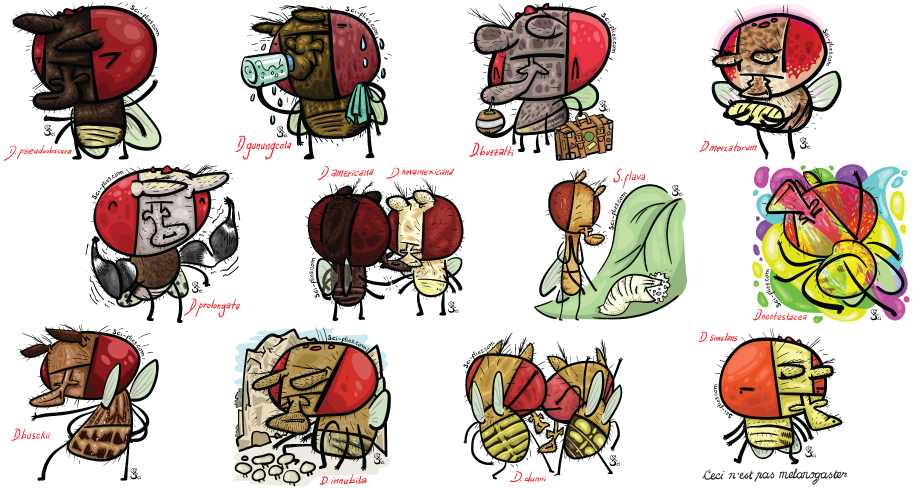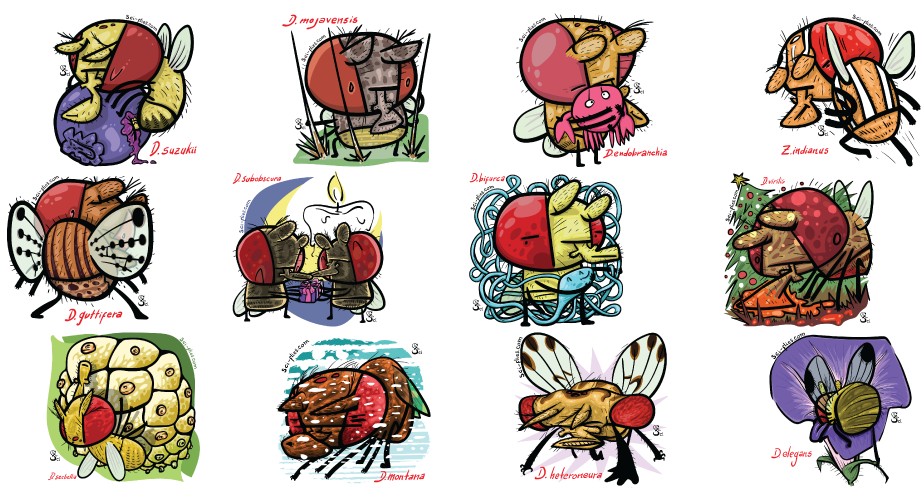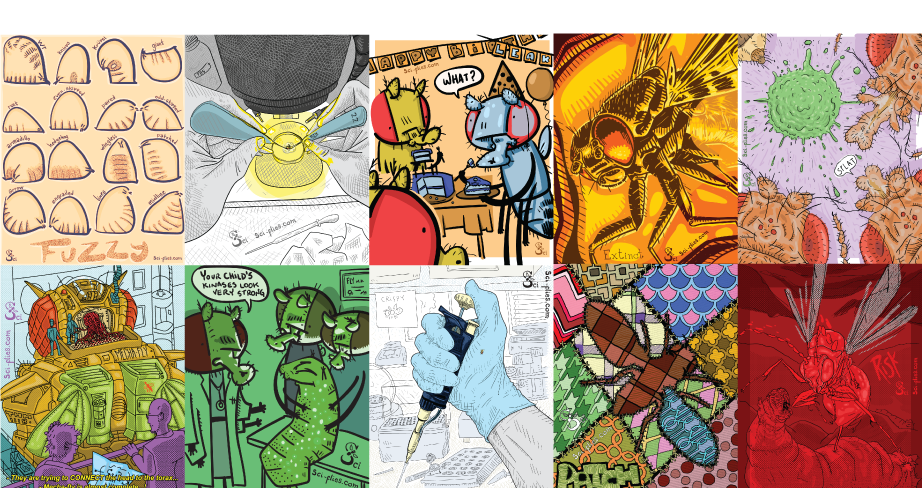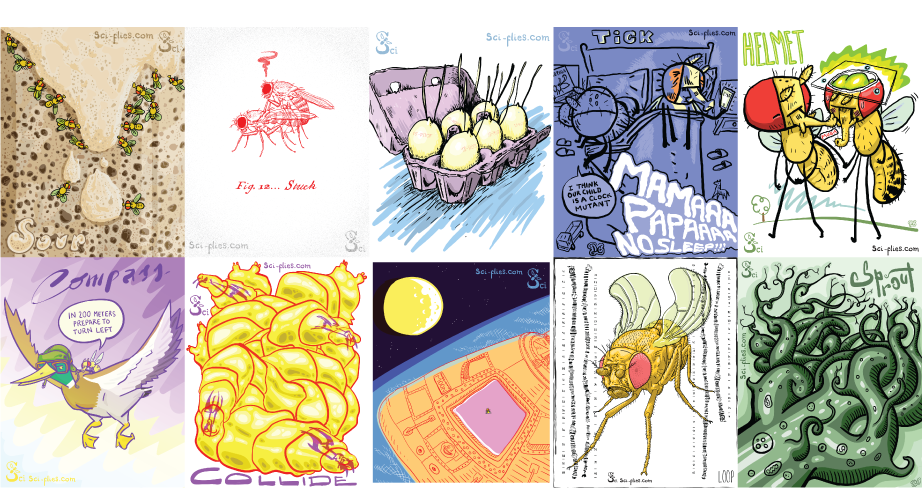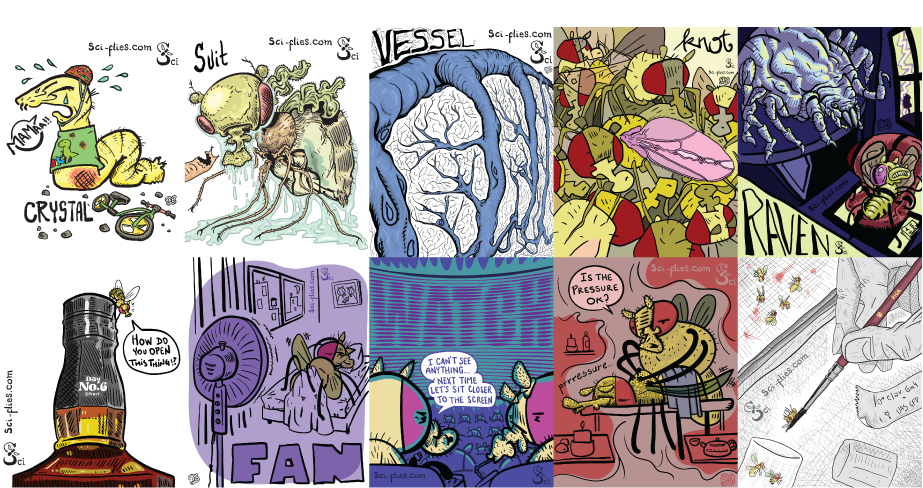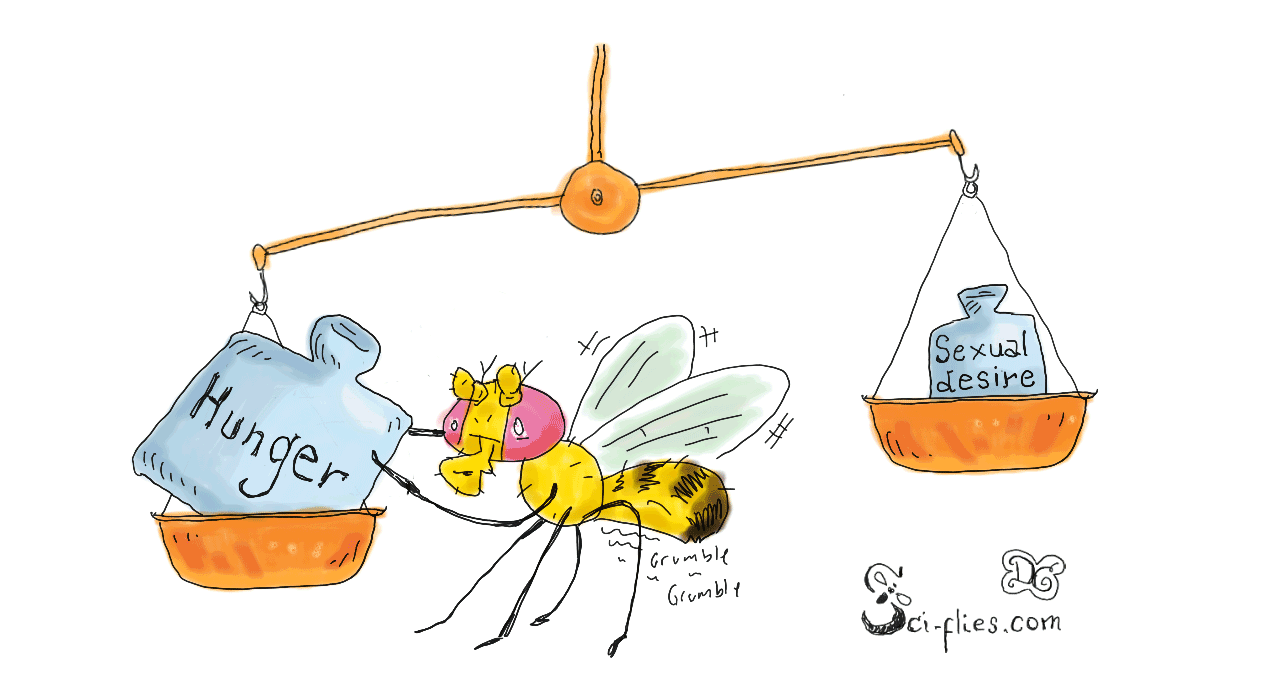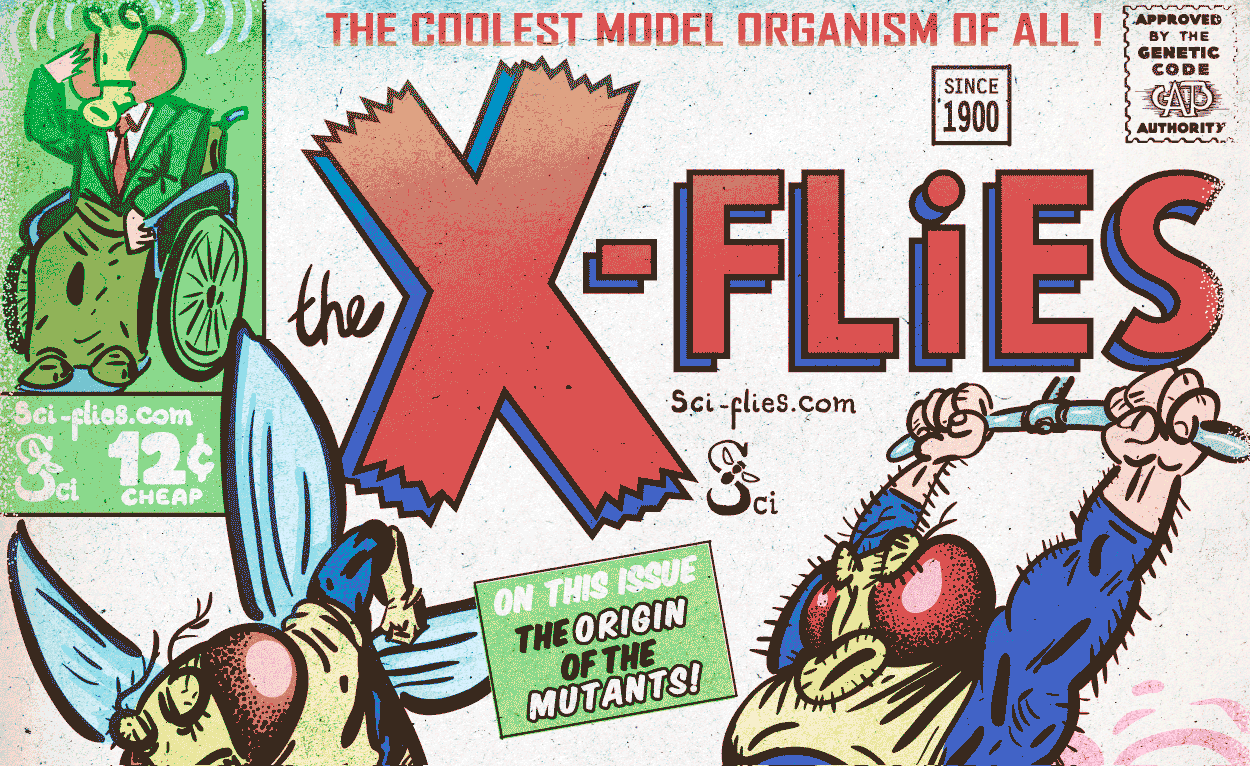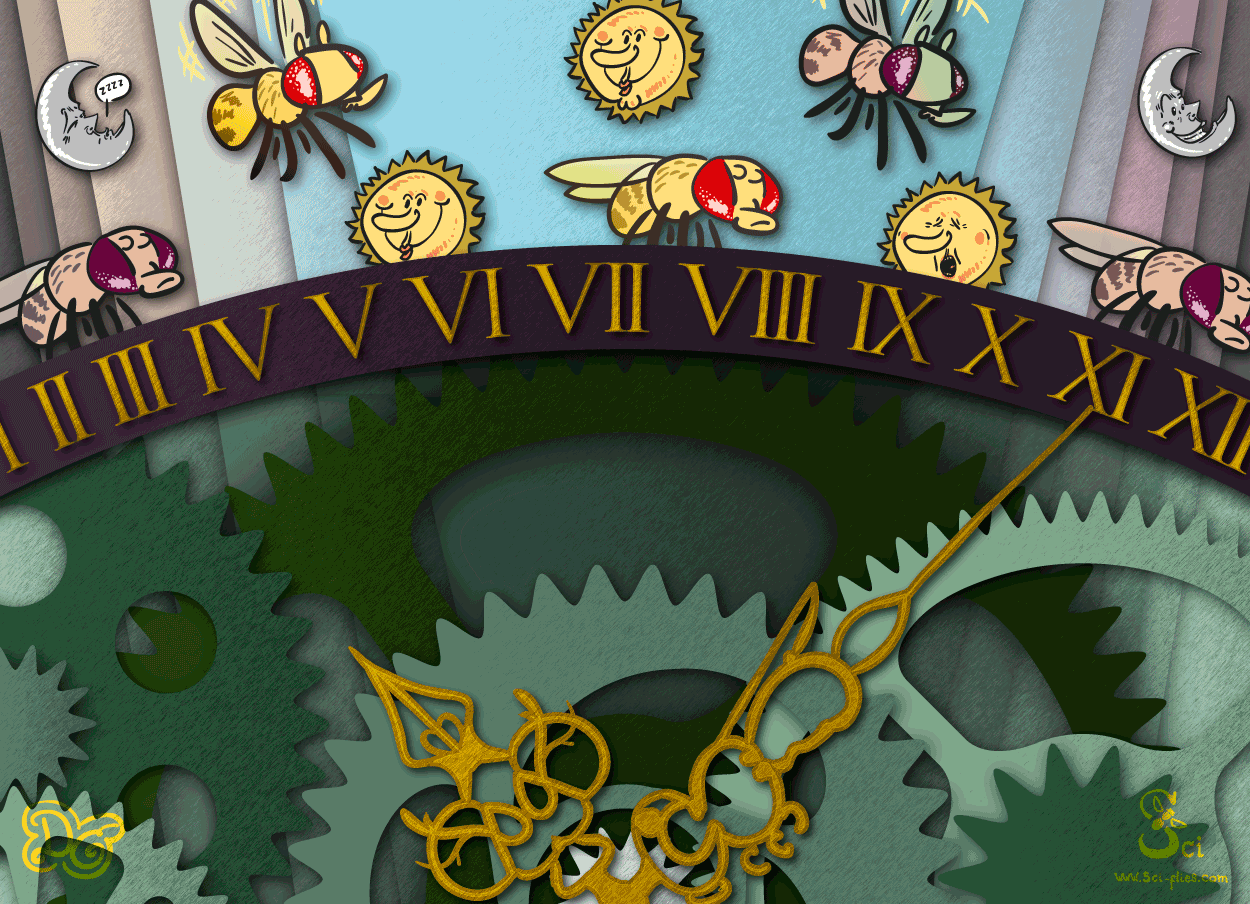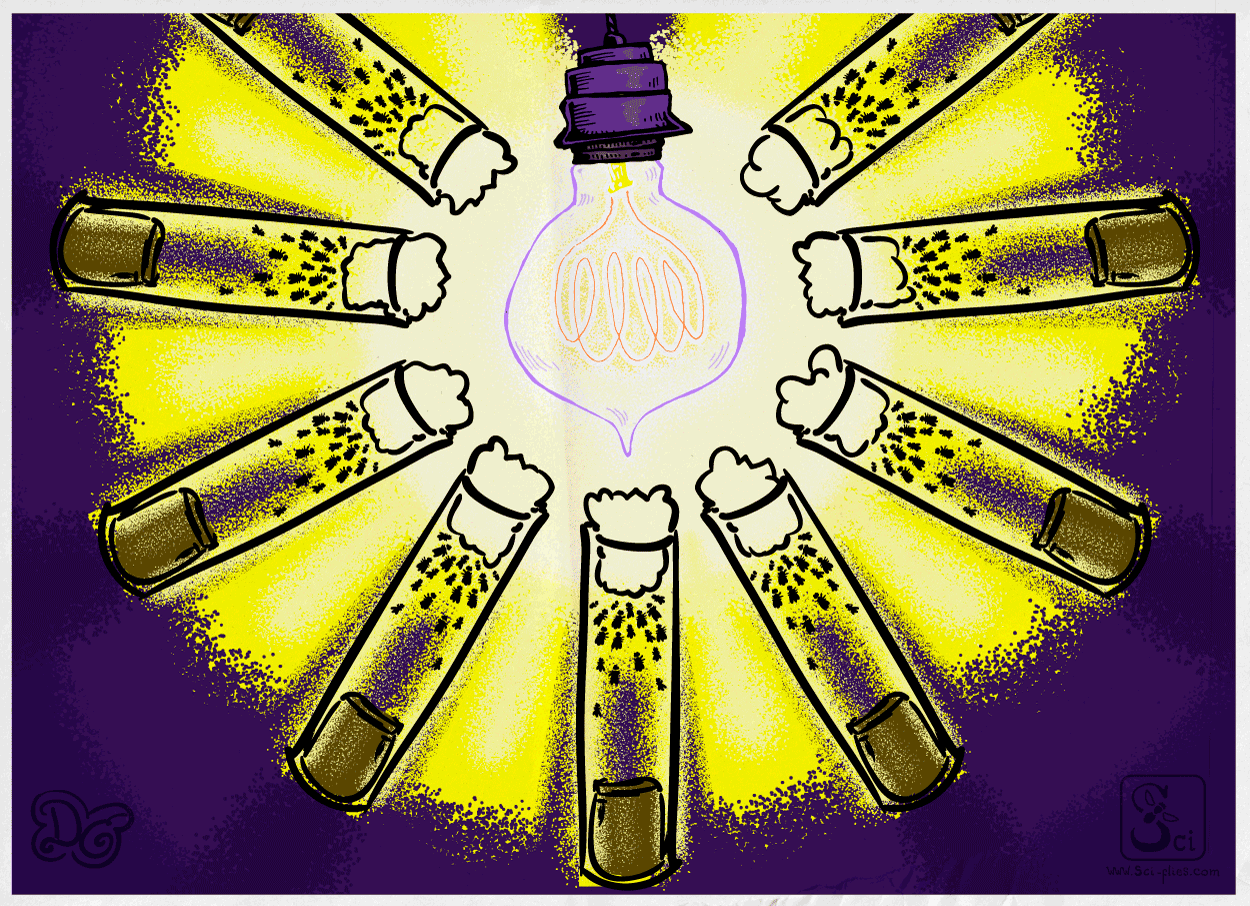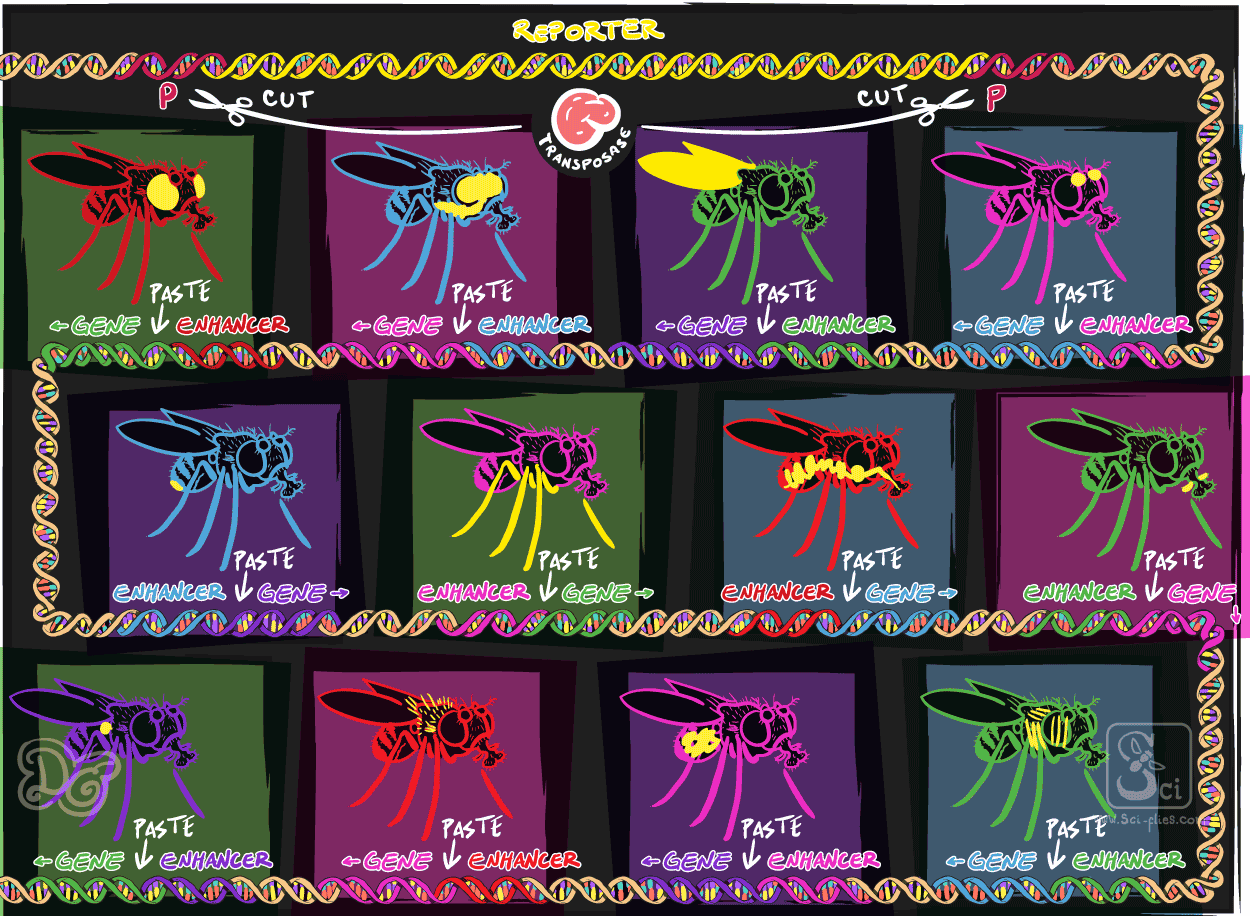The Genetic Bases of Heredity - Mendel and Morgan
We have talked about DNA and genetic information. Now we will talk a bit about the genetic bases of heredity; how this information is passed through generations, focusing on the historical aspects of the discovery of some of the laws and mechanisms of heredity. We will focus on the works of Mendel and Morgan.
Mendel and his pea plants
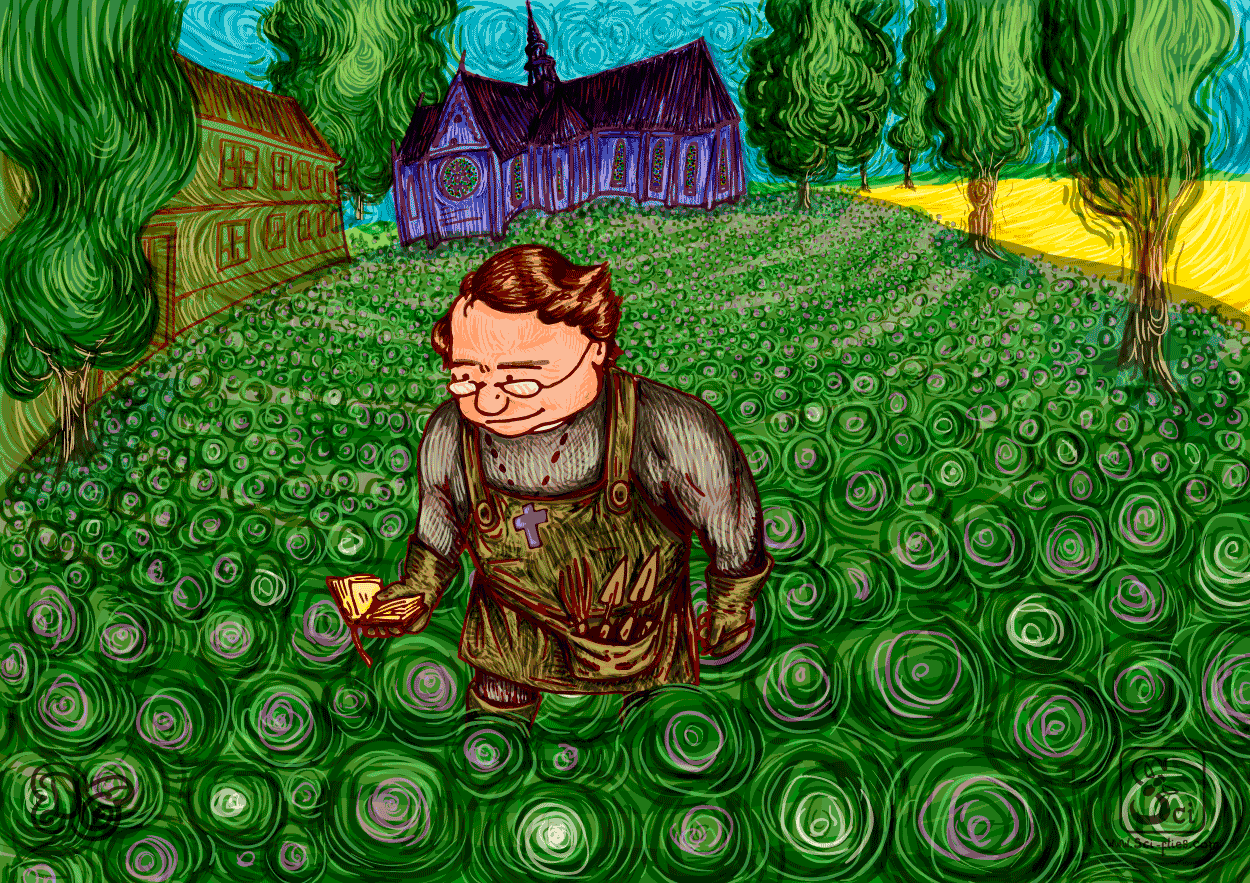
I will start talking about peas, and not flies. But flies play an important role in this story, later on. This starts with Gregor Johann Mendel. He was born in 1822 in Moravia, back then Austria, now the Czech Republic (in a town near the border with Poland). He came from a humble peasant family.
In 1847 he became a priest in Brünn. He wanted to be a natural sciences teacher but failed the certification exam, so he went to study more at the University of Vienna for four years. He studied physics, chemistry, mathematics, zoology, entomology, botany, paleontology. There he gained experience as an assistant demonstrator in physics and had classes with great researchers that influenced him a lot (he studied physics in Doppler’s class and botany with Unger).
When he returned to the monastery, he started working on pea plants, motivated as he said by artificial fertilization and the generation of varieties of ornamental plants. It is said that he started working with mice, but having experiments involving animal sex in the monastery was not well received. So, he did pilot experiments and observations for two years with pea plants, and in 1856 he began the experiments that lead to his important publication in 1866. He crossed thousands of plants in a space of two hectares in the monastery garden.
He wanted to understand how characteristics of the parents were passed on to the offspring.
So, what did he do? What did he find?
Dominant and recessive - Segregation and independence
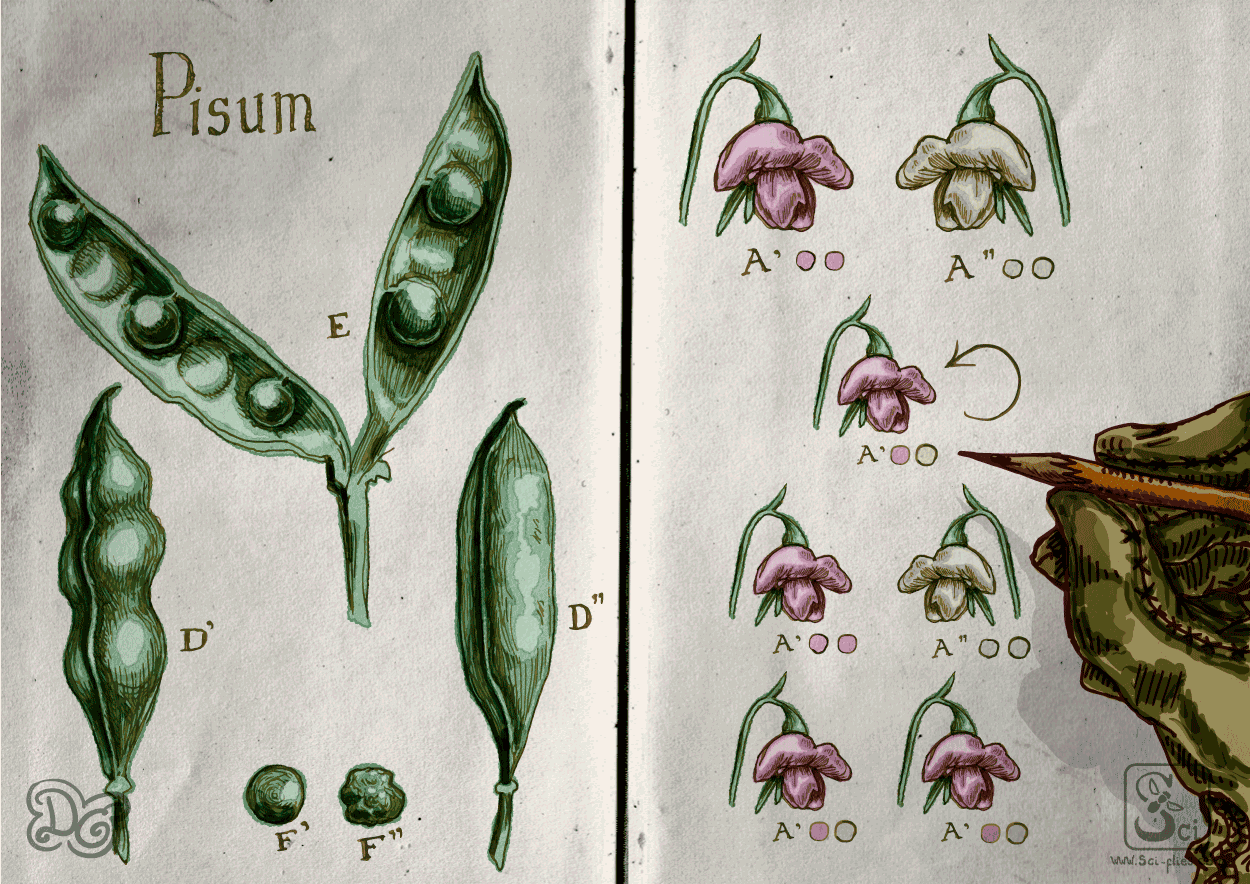
Mendel focused on several pure varieties of the pea (Pisum) plant. They stood out for certain physical characteristics of the plants that could take two possible forms according to the variety. Seed shape: wrinkled or smooth. Pod shape: constricted or inflated. Seed color: yellow or green. Flower color: purple or white. Plant height: tall or short. And others.
He observed that when he artificially inseminated a parent plant with the polen of another parent plant that had different forms of a characteristic (he crossed the plants), he would always obtain a first generation that looked like only one of the parents. These offspring would not be a mix of plants looking like either parent nor a blend of both. There was always one of the parent forms that would dominate over the other.
For example, crossing plants of the pure variety with purple flowers with plants of the white flower pure variety, he would always obtain only purple flower hybrid plants, in the first offspring generation.
But, what if he crossed those? What would the offspring of hybrids look like? Well, he did those crosses and the white flowers reappeared in the offspring of the hybrid plants.
He was certainly not the first to cross varieties, and notice that traits from parents were inherited by the offspring. But he did something that had not been done before him. He quantified, he counted and took notes of how many of each parent form he could find in the offspring of the hybrids. This methodological novelty made his discoveries possible (maybe it was his experience with physics and mathematics in university that made him a thorough experimenter that focused on quantifying what he observed?)
He had thousands of plants and saw that this second generation was always composed of three fourths (75%) of purple flowered plants and one fourth (25%) of white flowered plants (a 3:1 ratio). This was true for all the characteristics he studied.
Looking at regularity of the numbers he proposed that characteristics were passed on as discrete particles from parents to offspring. Each plant would have a pair of factors to determine the form of each characteristic, each member of the pair was inherited from only one of its parents and only one was then passed on to each of its own offspring. Pure parents had two of the same factor, while hybrids had one of each of the parental.
In the example, the first-generation plants inherited a white flower factor from the white flower parent and a purple flower factor from a purple flower parent.
Some of the forms of these factors were dominant over the others and would be displayed when there were one of each in the hybrids. He called the not dominant form, a recessive form, which would only be displayed when both factors in a plant were the recessive form.
The purple flower factor is dominant over the white, for that reason the first generation which has one purple and one white, is purple. You can follow this reasoning through the colored circles representing the factors in the illustration.
Mendel’s factors were later called Genes and associated to DNA. At the time of Mendel DNA had not yet been associated with inheritance.
The forms of a Mendelian factor (a Gene) are known as Alleles. The pea plants have two alleles constituting its Genotype. If the alleles are the same, it is called a Homozygous. The pure variety parent plants are homozygous. If the alleles are different, it is called a Heterozygous. The first generation hybrid plants are Heterozygous. The way a Genotype is displayed is called a Phenotype.
The hybrids are genotypically heterozygous, they have a dominant and a recessive allele. Their phenotype is identical to that of the pure variety parental that is a homozygous for the dominant allele.
His proposed mechanism allowed him to make predictions and then set up experiments to see if those predictions held up. He predicted the numbers in which he would find each characteristic in the offspring of different crosses between varieties, and those predictions were good.
He also saw that the different characteristics were independent from each other and would produce the expected proportions when they were combined in a same plant.
For example, plant height would segregate independently from flower color or pod shape. He could calculate the number of plants that were expected with a certain combination of these characteristics from specific looking parents.
During his life his work went mostly unnoticed and underappreciated. He communicated with other scientists but they failed to give proper weight to Mendel’s discoveries or even understand them. He continued doing experiments with other species until 1871, making very good observations on the inheritance of some traits on other plants. Those results were never published. He did not do much science afterwards, and focused on administration of the monastery until his death in 1884.
From Mendel’s discoveries, came two Laws of Inheritance.
- The Law of Segregation states that alleles of each gene segregate from each other during the formation of the gametes (the sexual cells) which carry only one allele.
- The Law of Independent Assortment states that genes for different traits segregate independently during the formation of gametes.
Can you think of cases in every-day life were Mendel’s laws are evident?
Morgan and his flies
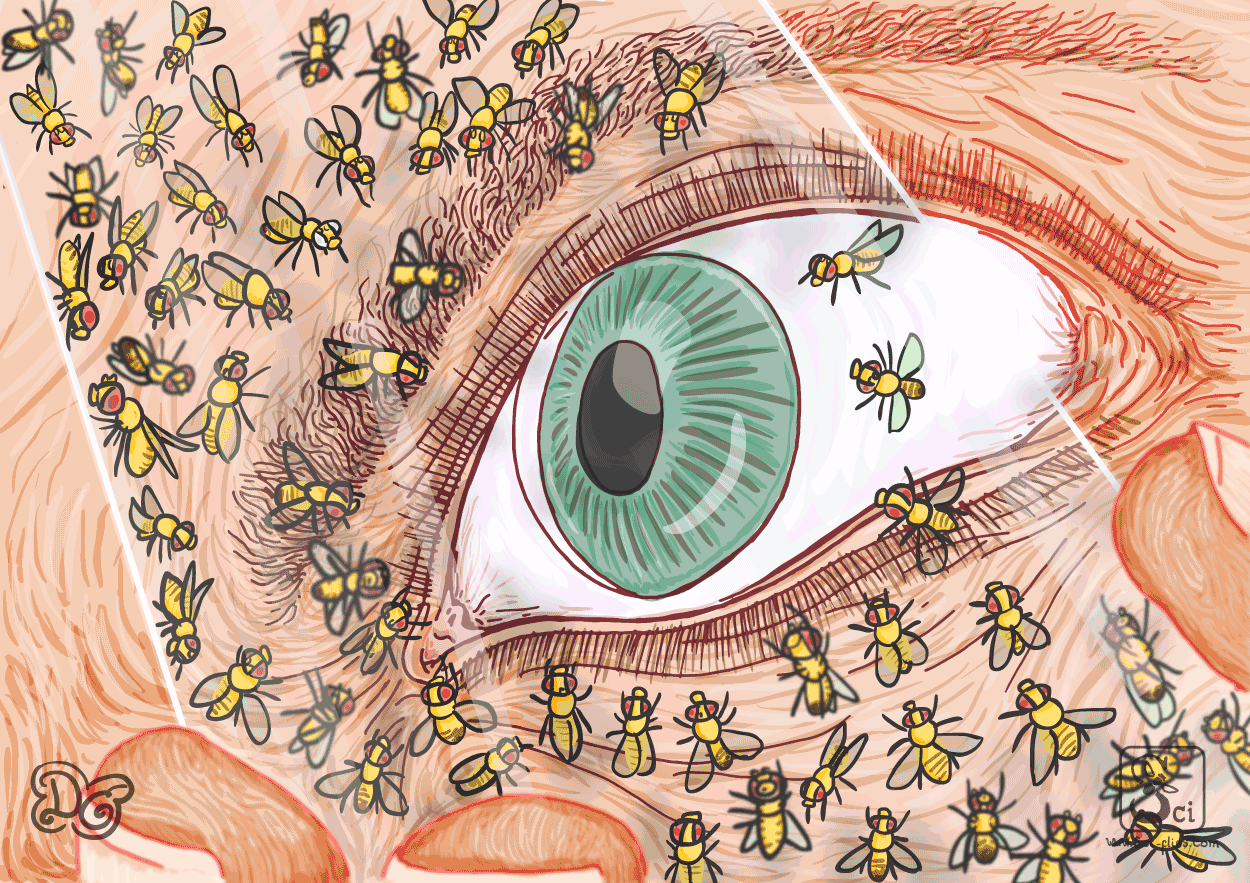
Mendel’s work was forgotten until 1900 when it was rediscovered independently by Carl Correns, Erich von Tschermak and Hugo De Vries, who published results like Mendel’s for several species of plants. By 1902 the Mendelian laws had been shown to apply also to animals (mice and chicken).
At this point in the story interest in inheritance was very high, because Darwin’s work had already revolutionized Biology and everybody wanted to explain how variation in species occurred and how it was transmitted through generations (of course we’ll talk about Darwin at some point, I’d love to draw him!).
Many scientists started doing important contributions and popularizing Mendel’s discoveries. Factors were now called genes and their study, genetics. At the same time the connection between DNA and genes started to form through the study of chromosomes.
We have talked about DNA. I mentioned that every cell has a full set of all the DNA. I also mentioned that DNA is a linear molecule. What I did not mention is that it is not one single molecule but several. Well, each of these molecules is called a chromosome. They are visible through the microscope at certain points in the life of the cells. They can be counted and their number is specific for each species (for example humans have 23 pairs, flies have 4 pairs and peas have 7 pairs).
At the beginning of the 20th century Theodor Boveri and Walter Sutton, working independently, observed that chromosomes come in pairs, one from the mother and one from the father, and that gametes (the sexual cells) have only one of each. So, chromosomes behaved according to Mendelian laws, they had to contain the Mendelian factors (genes) but how?
An interesting observation about chromosomes was that in males and females there are not the same number. There is one in males that does not have a pair, it is called the X chromosome. It is paired to a tiny chromosome called the Y chromosome. The gametes from the females have all X chromosomes. The gametes from the males have half of them X chromosomes and the other half the Y chromosome. This was the first chromosome undoubtedly associated to a characteristic of the organism, its biological sex.
In this context, Thomas Hunt Morgan started trying to use Drosophila flies to study genetics.
Chromosomes carry genes
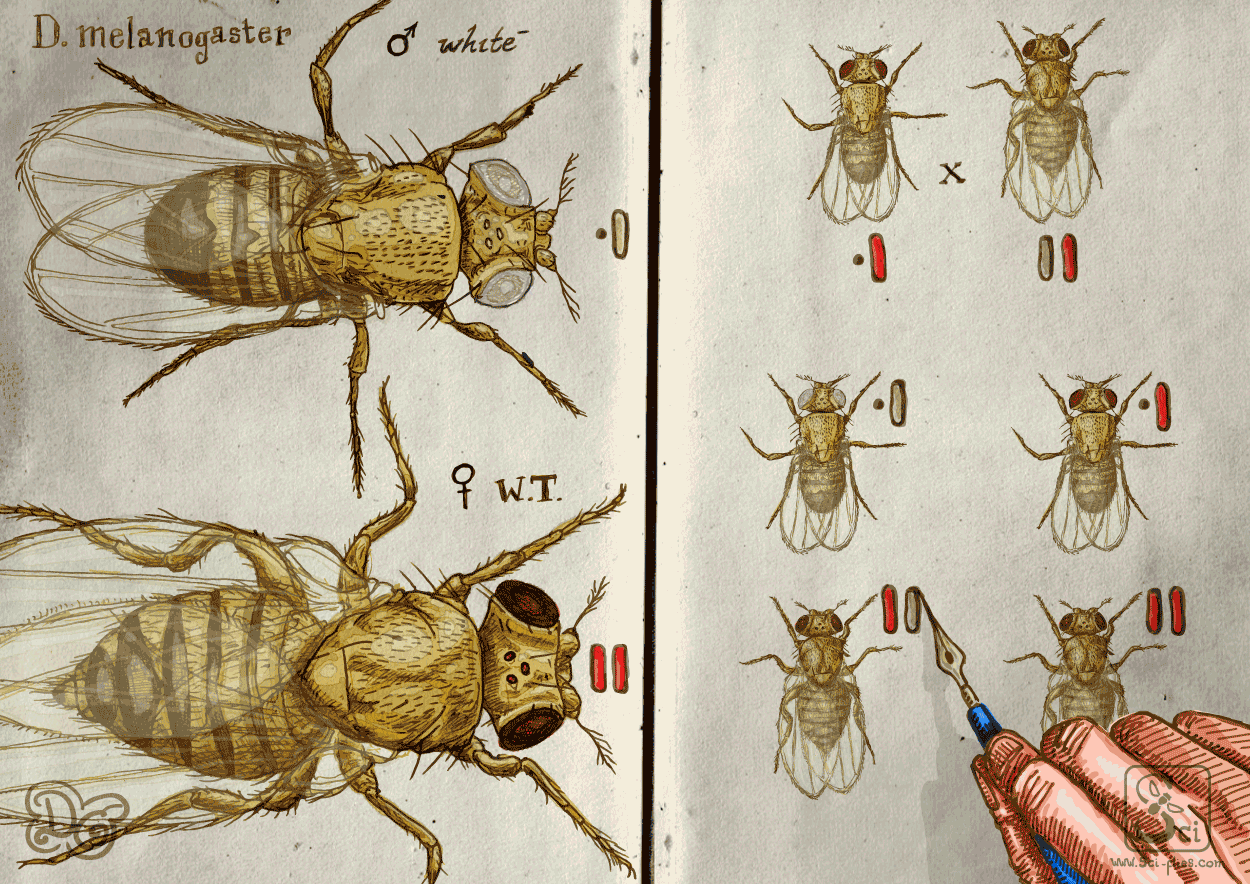
Thomas H. Morgan was born in Lexington, Kentucky (USA) in 1866. He studied zoology at Johns Hopkins University and later went to several places in Europe where he did research on chromosomes and sex determination. He returned to the USA and established a lab in Columbia University to study the mechanisms of heredity. Together with his students Bridges, Sturtevant and Muller he established a “fly room” a laboratory to work with Drosophila flies.
They started treating flies with chemicals and radiation to produce mutations, that is variations in physical characteristics that showed to be hereditary. In 1910 he found a white eyed male fly among the red eyed regular flies (did you find it in my drawing?).
He did crossings like Mendel, that is he took the white-eyed male fly and made it couple with regular red-eyed female flies. He observed that the offspring were all red-eyed flies, just as expected for a first generation according to Mendel’s observations.
Then he crossed these red-eyed offspring to each other, to produce a second generation. This second generation showed something very interesting. The proportions were still 3:1 as in Mendel’s experiments but all female-fly offspring in this second generation had red eyes while only half of the males had red eyes and the other half were white-eyed. There were not any white-eyed female flies.
You can follow the next reasoning with my illustration (Y chromosomes are dots, X chromosomes are colored bars).
The gene must be in the X Chromosome. The white-eyed male parent combined with a red-eyed female parent generated a red-eyed first generation. The red-eye form is dominant and the white-eye form is recessive.
This is because the X chromosome pairs with another X chromosome only in females and with a Y chromosome in males. All male flies in the first generation get their Y chromosome from their father and their lonely X chromosome from their red-eyed mother.
The white eye X chromosome from the father goes to the females of the first generation where it is paired with a red eye X chromosome that comes from the mother.
In the second generation all males get their Y from red eyed father, half of them get a white eye X from their mother and the other half a red eye X. All the females get a red eye X from the father so the all have red eyes.
From these experiments Morgan concluded that some characteristics were linked to sex, that those were most probably carried in the sex chromosomes and that it was highly probable that all other chromosomes also carried genes.
With his students they generated many more mutants. They saw that there were more genes than chromosomes, so every chromosome had to carry more than one gene. They confirmed this and were able to assign the positions of each of the genes resposible for the characteristics of the mutants to different points in each chromosome of the fly (I’ll tell more about this in the future).
Morgan’s work settled the question of the location of the gene and opened the study of genetics and the cellular mechanisms of heredity.
He was awarded the Nobel Prize in 1933.
Interesting References
I based most of the text on a book by Sturtevant (one of Morgans students/colaborators) called “A History of Genetics”. You can find it here (ESP – The Electronic Scholarly Publishing Project). I recommend that site because it has a lot of material on classical genetics. There you can access a lot of the original papers (by Mendel, Morgan and many others) with comments and explanations.


